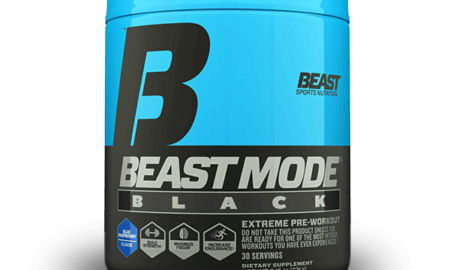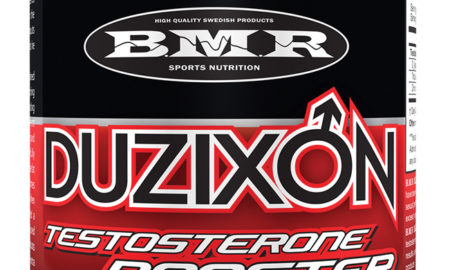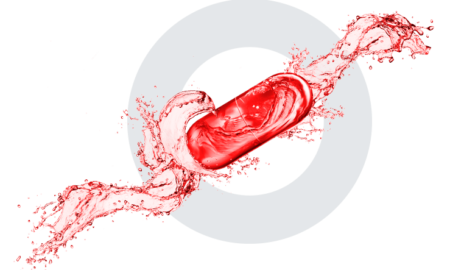A study presented in San Diego at the 42nd annual meeting of the American Society of Nephrology has linked long-term steroid use with kidney disease, and the authors suggest, as we saw in Part 1 last month, that having large muscles may predispose a person to kidney ailments. This month I continue my discussion with the study’s lead author, Leal Herlitz, M.D., a research pathologist at Columbia University Medical Center in New York.
JB: Was there a direct toxic effect of the anabolic steroids on the kidneys, or was the damage mainly related to the bodybuilders’ great amount of muscle mass?
LH: We believe there is a direct toxic effect in addition to the simple overwork of glomeruli [the filtering units in the kidneys] that is caused by elevated body mass. We believe that because when you compare the bodybuilders to a control group of obese patients who also developed FSGS [focal segmental glomerulosclerosis], even though the bodybuilders had less body mass on average, they had a more severe form of kidney disease, leading us to think that the steroids themselves were toxic.
JB: Would it be correct to say that the type of side effect you’re talking about is limited to high-dose, long-term anabolic steroid use?
LH: I think that it is unlikely that short-term—months—usage would commonly produce this type of scarring. That is not to say that more limited or subtle renal damage couldn’t be caused by short-term use, but we just don’t have that data.
JB: Based on your study, are athletes who use steroids in high doses long-term at a greater risk of kidney damage?
LH: Yes, I think they definitely have an increased risk, but that’s not to say that all long-term users will develop kidney failure. We don’t understand what predisposes some patients more than others to side effects.
JB: Is there any difference between oral and injectable steroids in regard to kidney toxicity?
LH: We didn’t look at that aspect specifically. Some of the subjects took oral drugs, some injectable. Some took both.
JB: Is it possible that some bodybuilders on high-dose-steroid regimens who currently show no kidney symptoms will eventually experience them if they continue to use the drugs?
LH: I can’t really answer that because we don’t know how common it is. Most steroid abusers aren’t telling their docs that they use, so it’s hard to make the connection. I think that long-term users are at a significant risk of developing kidney disease, and so they should be aware of that. Their doctors also need to be aware of the potential risk and screen the bodybuilders using these drugs. For what it’s worth, one of the professional bodybuilders in our study said that he had a bunch of friends who have kidney problems, so the jury is still out on how common it is.
JB: Did the bodybuilders in your study stay on steroids continuously, or did they get off the drugs between cycles?
LH: While I don’t have the precise details of the steroid regimens they used, I do believe most followed steroid-cycling patterns. What makes the kidney damage alarming is that once a glomerulus scars, it is irreversibly damaged. That’s not to say that if the disease is discovered early and patients are treated and if they cease using steroids, their condition won’t stabilize or improve. But particularly in advanced cases, the damage is chronic.
JB: What was the age range of the bodybuilders in your study?
LH: Twenty-eight to 49.
JB: Other than refraining from using steroids long term, is there anything athletes can do to minimize or prevent that type of kidney pathology?
LH: Getting regular medical checkups is important. Doctors need to be aware that they should take a close look at kidney function, including the amount of protein that is being spilled into the urine in patients using anabolic steroids. Protein in the urine, which patients see as foamy urine, can be the earliest sign of this type of kidney damage.
JB: Would it be correct to say that any athlete with existing kidney abnormalities would be at higher risk when using anabolic steroids?
LH: Absolutely. The published study discusses a pro bodybuilder referred to as the “index case.” He was 30 years old and 6’ and weighed 295 pounds. He showed up at a local hospital complaining of edema, or excessive swelling, in his thighs. The bodybuilder told attending physicians that he regularly ate a high-protein diet, averaging 550 grams daily. He also took 10 grams of creatine daily, 1,000 milligrams of branched-chain amino acids, 10 grams of glutamine and multivitamins. He’d used anabolic steroids for more than 10 years and at the time of his hospital visit was injecting four units of growth hormone five days a week and 500 milligrams of testosterone twice weekly. Prior to training, he also took 75 milligrams of ephedrine and 600 milligrams of caffeine.
After being treated by the doctors, the bodybuilder stopped all training, supplements and drug use, leading to a loss of 40 pounds over two months. But he did report a greater sense of well-being and felt that he had more energy. Within two months of his hospital visit, his slightly high blood pressure returned to normal, and the leg edema disappeared. Eight months later he’d lost an additional 40 pounds, which brought his weight to 215. He still avoided hard training, as well as drugs and supplements. But the loss of most of his previous muscle mass left him depressed. He complained of being skinny and weak and said that his sex drive lagged. He began training again but avoided using supplements or drugs. Within two months he was up to 267 pounds but still felt small. As a result, against his doctor’s advice, he went back on his very-high-protein diet and also added the supplements, steroids and GH but at lower doses than he previously used. Within six weeks he was again showing indications of kidney stress, such as elevated blood creatinine levels and excess protein in his urine. Although advised to stop the supplements, lower his protein intake and stop the drug use, he refused to comply. Within 3 1/2 years he was back up to 296 pounds, with similar negative kidney function tests as before.
Book Review: Anabolic Pharmacology
While interest in the effects of anabolic steroids and other anabolic drugs are at a zenith, likely the result of the extensive publicity about drug use in sports, the information on such drugs is often misinterpreted or downright wrong. That’s particularly true on the Internet. Countless self-appointed Internet steroid gurus dispense information that is based on nothing more than supposition and anecdotal evidence, neither of which have any relationship to true science. While the results of such questionable information can result in a lack of expected effects, in other cases the level of misinformation can prove hazardous to health, or even deadly.
One antidote to such misinformation is to read sources of information about anabolic steroids and other anabolic drugs that have a basis in reality in that they accrue from a study of the available scientific literature on the subject. I’ve reviewed a number of excellent steroid books in this column over the years based on my assessment of their value to readers. My most recent entry into this domain of knowledge is a new book titled, Anabolic Pharmacology, which sounds a bit like this column.
It was written by “Seth Roberts,” which is a pen name. Roberts claims to hold combined bachelor’s degrees in chemistry and pharmacology. He was a pharmacologist in the pharmaceutical industry, where he worked in drug discovery and development. His areas of interest include obesity, muscle wasting, cardiovascular and renal physiology and hematology. In addition, he has had a personal interest in anabolic pharmacology for more than 20 years, which led to the writing of this book.
As to his motivation for the publication of Anabolic Pharmacology, Roberts feels that other books on the subject rely too much on anecdotal information, perpetuating widespread misinformation that he refers to as “bro-lore.” He also was motivated to include information not contained in the other books in this genre that is known to researchers but not understood by the “AAS-using community,” as he put it to me.
While Roberts goes into extensive detail in discussing the often esoteric mechanisms behind anabolic drugs, he also admits that he left out information that would have proven too obtuse to the nonscientist. He points out that an advantage of his book is that it takes a more objective and scientific view of anabolics than other entries in the genre because their authors lacked his science background. Roberts took more than 10 years to write the book, and the quality of information attests to that.
Anabolic Pharmacology offers revelations about various drugs not seen in similar books on the topic. For example, when discussing a particular anabolic steroid called mibolerone, trade name Cheque Drops, which was a veterinary drug for dogs, he suggests that boxer Mike Tyson, who is not named in the book, may have been using it at the time of the infamous ear-biting incident in the match with Evander Holyfield. Cheque Drops were known to bring on extreme aggression in some users.
Another of the many interesting facts related by Roberts is that getting off aromatase-inhibiting drugs, such as Arimidex, may increase estrogen response through various mechanisms that he fully explains. Indeed, Roberts notes that high-dose-steroid regimens often displace estrogen from the steroid-binding protein in the blood, which can result in gynecomastia and other estrogen-related effects. That effect isn’t blocked by aromatase-inhibiting drugs. Large doses of the drug Clomid, which many athletes use to kick-start lagging testosterone after a drug cycle, may paradoxically stimulate estrogen receptors and lead to lowered testosterone. While bodybuilders on steroids often use the drug Nolvadex to block the effects of estrogen, according to Roberts, a similar drug, raloxifene, is far superior to Nolvadex in that regard. It’s also considerably more expensive.
That’s just a small sample of the fascinating data Roberts discusses in his book. I learned quite a bit about the relationships of various enzymes to steroid physiology, as well as some of the lesser-known effects of the drugs themselves. He also discusses the drugs’ health effects, dosing regimens and pro-hormones, even suggesting some new possibilities, although judging by recent government crackdowns in that area, getting into the pro-hormone industry these days is extremely ill-advised, to say the least.
Anabolic Pharmacology is an informative and easily understood reference book sure to delight anyone with even a passing interest in the true mechanisms and effect of these drugs. You can purchase it at Mesomorphosis.com.
Editor’s note: Jerry Brainum has been an exercise and nutrition researcher and journalist for more than 25 years. He’s worked with pro bodybuilders as well as many Olympic and professional athletes. To get his new e-book, Natural Anabolics—Nutrients, Compounds and Supplements
That Can Accelerate Muscle Growth Without Drugs, visit www.JerryBrainum.com. IM




















You must be logged in to post a comment Login